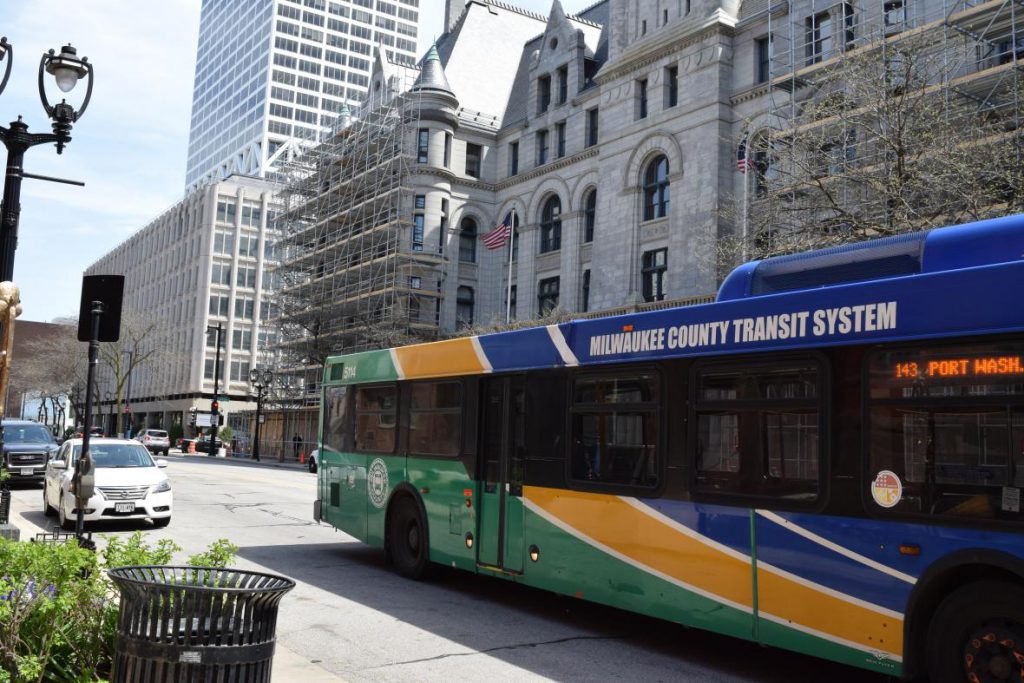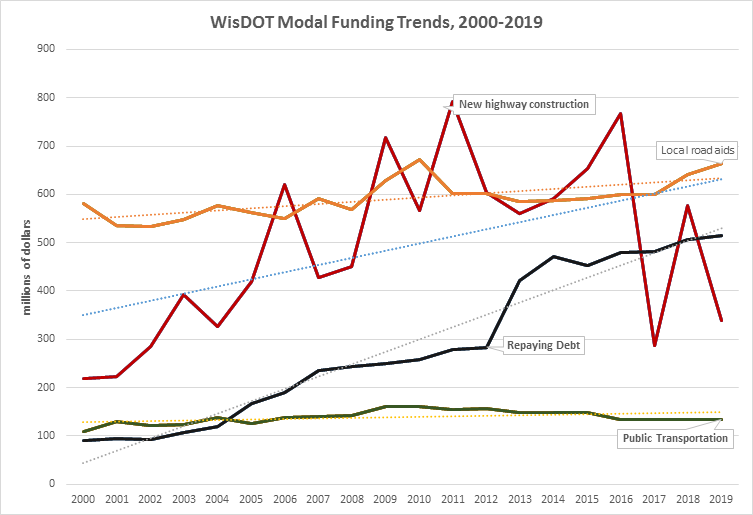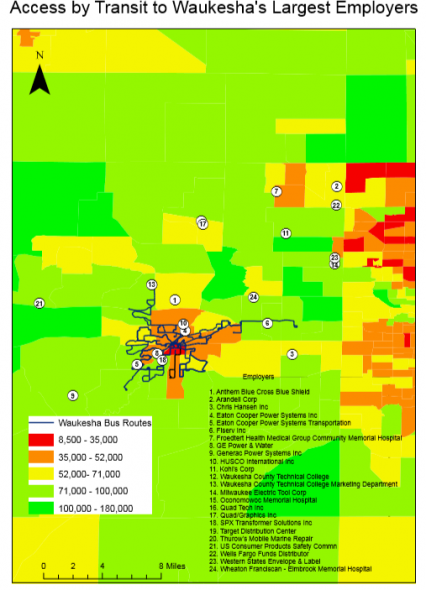Study Finds Public Transportation Inequities
Funding rose 67% for state roads but only 1% for local roads.
If you rely on public transportation, where you live in Wisconsin has a lot to do with how easy it is to get around, according to a new study.
As demand for reliable transportation grows, regions in both rural and urban parts of the state are struggling to fill the need, said Cassie Steiner, outreach associate for the Sierra Club, one of several Wisconsin nonprofit groups that commissioned the study out last month.
“A lot of our transit systems are trying, and know where the gaps in their service are, however there has been a stalemate in funding and a decrease in funding around 2010 that has not been made up,” she said.
In 2015, $1.7 billion out of the $3.1 billion transportation infrastructure spending was on state highways, the report says. At $144.5 million, state funding for public transit made up less than 5 percent of that total budget.
In the last two decades, funding priorities have fallen heavily on the side of highway construction and maintenance, Steiner said. Between 2000 and 2015, funding for new highway construction went up by 67 percent, while during the same period, local transportation funding increased by only 1 percent, according to the report.
“(We’re looking at) how we could re-prioritize even a little bit from expanding highways to public transportation and local roads and that would make a huge difference,” she said.
Older adults, people with a disability and low-wage workers feel the effects of poor public transportation more acutely, Steiner said.
“If you are visually impaired or if you have a disability, that means you cannot drive, public transportation is your lifeline,” she said. “Whether you can afford a car to begin with … public transportation connects workers to jobs in a lot of areas of our state.”
In rural areas, much of that increase in need is due to an aging population.
“Wisconsin is aging rapidly, and we’re seeing this happen especially in rural counties,” she said. “People are outliving their ability to drive … that can lead to people being stranded in their homes or having to leave their homes sooner than they would like to to move into facilities.”
It’s one of the newer systems around the state, and is still gaining traction, Steiner said. Other small towns around the state offer shared taxi rides or other similar options.
But for most of the rural systems you have to schedule your ride a couple of days in advance, she said.
Yet in the more urban area of downtown Milwaukee, a $128 million streetcar project using both federal and local funds recently opened with hopes to better connect residents and visitors to the area’s jobs and recreation.
Public transportation systems also aren’t keeping up with job growth and development trends, Steiner said.
“Wisconsin and across the nation where jobs are growing is in the suburbs,” Steiner said. “Population is growing in urban areas and the transit systems just can’t quite keep up with where the development is happening.”
One of the biggest barriers is the inability for transit systems to cross county lines, which is a big deal for Milwaukee County, whose transit system serves the most riders in the state by far, Steiner said.
“A lot of job growth is happening in nearby counties, Racine County and Waukesha County most notably, and so workers, especially low-wage workers who can’t afford vehicles, have very limited options to getting to their jobs,” she said.
There are currently bus routes connecting Milwaukee County to Waukesha County, but that funding was set to run out at the end of this year. Milwaukee County is extending some of that funding, but it is unclear what will happen when it runs out.
“Most of the transit systems are trying to identify ways to get workers to jobs or people to the parts of the city they need to go,” she said. “But again funding is a huge hurdle for a lot of these these transit systems.”
Listen to the WPR report here.
New Report Shines Light On Wisconsin Transit Inequalities was originally published by Wisconsin Public Radio.
Transportation
-
MCTS Adds 28 New Buses
 Jul 13th, 2024 by Graham Kilmer
Jul 13th, 2024 by Graham Kilmer
-
MCTS Designing New Bus Shelters
 Jul 10th, 2024 by Graham Kilmer
Jul 10th, 2024 by Graham Kilmer
-
MCTS Updates RNC Bus Detours To Better Serve Downtown, Riders
 Jul 9th, 2024 by Jeramey Jannene
Jul 9th, 2024 by Jeramey Jannene

























This is an important moment in our transportation story. MCTS is unveiling a new revised route system next Tuesday and SEWRPC is pressing forward with its revised transportation plan. The IPCC has said we have twelve years to turn upside down how we live and move. Will we have enough love for our planet to make changes or will we continue to add lanes when we can’t take care of the lanes we have; when we know that adding lanes means more traffic congestion not less; when we know that mass transit is the answer to moving people to jobs and to mitigating and perhaps reversing climate catastrophe? You might read about the Extinction Rebellion going on in the UK!!!